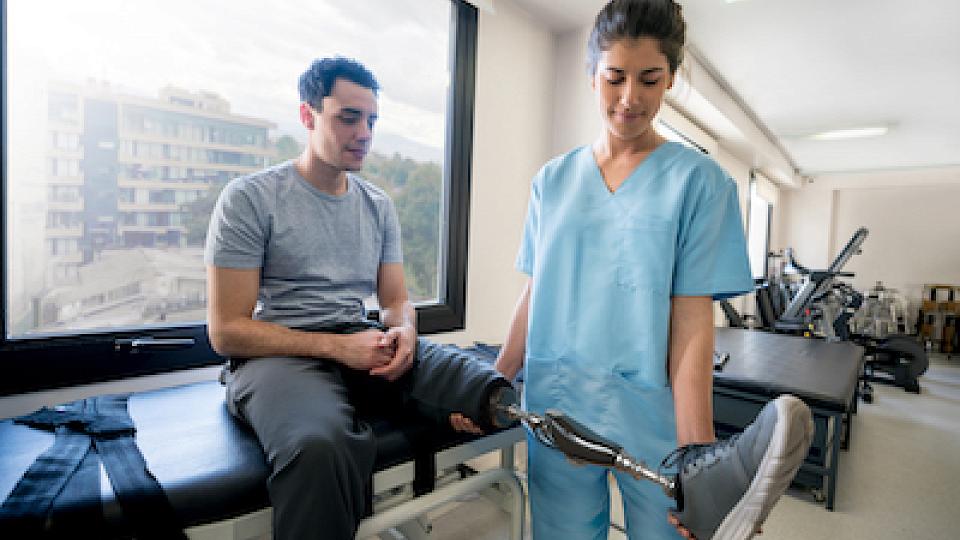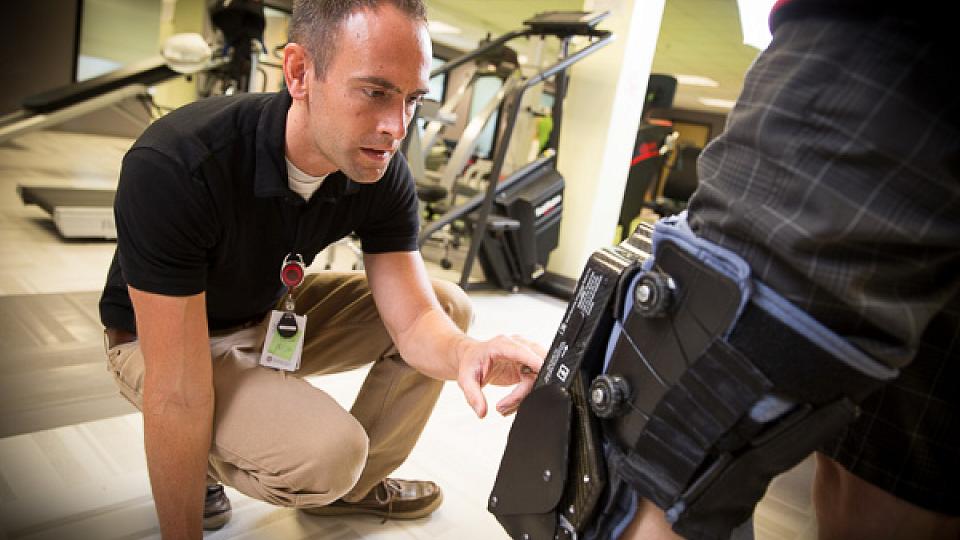
Targeted Muscle Reinnervation For Amputee Patients
People who have had a limb amputated often experience phantom limb pain and neuromas (painful, scarred nerve endings). Targeted muscle reinnervation (TMR) surgery can help relieve the pain by rerouting nerves in the affected limb. TMR can occur during the amputation surgery as a preventive measure or months or years after the amputation.
TMR Surgery at University of Utah Health
TMR is a highly specialized reconstructive microsurgery that uses powerful microscopes and precision instruments. Plastic surgeons who perform this surgery at U of U Health have advanced, fellowship-level training in TMR and other microsurgeries.
People from throughout the Mountain West come to U of U Health for targeted muscle reinnervation surgery. In addition to benefitting from our surgeons’ experience and expertise, patients will receive well-coordinated, multidisciplinary care from a team that includes:
- nurses,
- physical therapists,
- occupational therapists, and
- pain management specialists.
Targeted Muscle Reinnervation Technique
TMR is a three to four-hour surgery that involves rerouting some of the peripheral nerves in your amputated limb. Peripheral nerves are the nerves located outside the brain and spinal cord. Your body has two types of peripheral nerves:
- sensory nerves allow the sensation of pain, pressure, etc. and
- motor nerves are responsible for movement.
During surgery, you will receive general anesthesia to put you asleep throughout the entire procedure. Your plastic surgeon will make an incision (cut) in your limb and identify the sensory and motor nerves using a nerve stimulator device. Your plastic surgeon will target the sensory nerves that gave sensation to the part of your limb, such as your leg or hand, that is no longer there. Your plastic surgeon will then cut the sensory nerves and attach the ends to the motor nerves. If you have a neuroma, your plastic surgeon will also remove that during the procedure. TMR reduces the chance that a neuroma will reform in the future.
TMR Surgery Benefits

TMR promotes nerve growth and healing. Health care experts do not fully understand why it helps relieve pain associated with amputation. But they do know it prevents your sensory nerves from sending faulty pain signals to your brain, which results in:
- less pain,
- an improved ability to wear a prosthetic limb, and
- a better quality of life.
Will TMR Relieve My Painful Symptoms?
Most amputee patients experience some pain relief after targeted muscle reinnervation surgery. For some people, the relief is significant. Sometimes, the pain gets worse after TMR before it gets better. Your care team will customize a pain management plan to help you safely manage post-surgical pain.
People with neuromas typically benefit more from the surgery than people with phantom pain only. But every patient is different. Your plastic surgeon will help you understand how TMR may help you.
What to Expect at Your Pre-Surgical Evaluation
During your TMR evaluation, your plastic surgeon will:
- ask questions about your health history;
- examine your amputation site and residual limb (the part that remains after amputation); and
- talk to you about your symptoms and how they affect your daily life.
Our team will schedule your TMR surgery at a U of U Health location and provide you with written instructions to help you prepare.
Recovery
You will likely remain in the hospital for one night after your TMR procedure. Your care team will explain how to care for your surgical site and what to expect during the recovery process. Our staff will schedule a follow-up appointment with your plastic surgeon to ensure the site is healing well and address any concerns. Your plastic surgeon may refer you for physical therapy or occupational therapy to help build your mobility, flexibility, and strength.
Post-Surgery Guidelines
- You will be able to shower within 48 hours of surgery.
- You should avoid swimming or taking a bath for about four to six weeks after surgery.
- You will wrap the surgical site with an athletic bandage for two weeks after surgery.
- Once the swelling goes away and your incision heals, you will wear a compression sleeve on your residual limb. This is typically two weeks after surgery.
- Most people will resume their normal activities (including wearing a prosthetic) about four to six weeks after surgery.
- Your surgical pain will go away within six weeks. However, your phantom pain and neuroma pain symptoms will likely continue to improve for three to six months after surgery.
Find a Plastic Surgeon
Schedule an Evaluation
Referrals are welcome but unnecessary for people seeking an evaluation for targeted muscle reinnervation at U of U Health. To make an appointment with a plastic surgeon at U of U Health, call 801-581-7719.
Before your first appointment, a member of our staff will talk to you on the phone about your insurance coverage, condition, and what tests or imaging studies you have already had. We will obtain any test results and imaging reports that are not in our U of U Health electronic medical record system.




